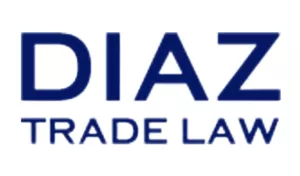Whether you're a seasoned importer or just entering the trade world, keeping up with thousands of pages of regulations can be a challenge.
A stated priority of the current administration is deregulation. On January 31, 2025, President Trump signed an Executive Order titled " Unleashing Prosperity Through Deregulation." The Order requires that whenever an agency promulgates a new rule, regulation, or guidance, it must identify at least 10 existing rules, regulations, or guidance documents to be repealed.
At last month's Trade and Cargo Security Summit, CBP said they and their partner agencies are seeking feedback on what regulations are obsolete or simply don't reflect the reality of the current trade environment.
Here's a sampling of some potential obscure and obsolete regulations that CBP may consider revisiting (what are your additions to this list?):
Allowing Non-Resident Importers to Act as an Importer of Record in the U.S.
Although there are many entities that legitimately use the exception found in 19 CFR 141.18, which permits non-resident corporations to make entry of goods into the U.S. (as an importer of record), companies can also do so with malicious intent. The non-resident entity solely needs a U.S. agent for service of process and a customs bond. This particular exception is one that a bad actor can use surreptitiously. For example, a non-resident importer can create a shell entity to act as the importer of record and/or U.S. agent that can easily shut down operations to avoid CBP enforcement and payment of duties. This is an exception that CBP can consider removing from the regulations, forcing entities to be legally registered in the U.S. to become an importer of record (CBP could also go as far as requiring the entity to have a U.S. bank account).
Duty-Free Bolting Cloth
19 C.F.R. §10.58 discusses prerequisites for a duty-free importation of silk bolting cloth if it is indelibly marked with the phrase: "Bolting cloth expressly for milling purposes." The phrase must be marked from selvage to selvage at intervals of not more than 10.16 centimeters in block letters 7.62 centimeters in height. Are these marking requirements archaic? Does the exemption reflect modern industrial milling, which utilizes synthetic fibers such as polyester or nylon?
Rate of Duty Dependent Upon Actual Use
19 C.F.R. § 10.131 allows importers to benefit from a lower or free duty rate based on how merchandise is actually used. For example, synthetic materials can be used for general commercial purposes (higher duty rate) or for manufacturing specific products (low or free duty rate). To benefit from the low or free duty rate, the importer must meet strict requirements, including furnishing proof of use from the end user or the manager of the manufacturing plant. Is this requirement archaic? Technically, is it not difficult for CBP to enforce and burdensome for importers to benefit from (and perhaps worth removing)?
Country of Origin and Marking Requirements
All products imported into the U.S. must have a country of origin marking that designates the country of origin. For some product categories such as food and textiles, the label must contain even more information. Some trade stakeholders have argued that these requirements need to be revisited and CBP should consider implementing an electronic labeling system. Do you agree?
Part 171, Subpart E – Restoration of Proceeds of Sale
Title 19 CFR Part 171 Subpart E sets out the requirements for individuals or companies to request the return of proceeds from the sale of seized property. This part implements section 613 of the Tariff Act of 1930 which governs the order in which the proceeds from the sale of seized or forfeited goods are applied:
- To cover the costs of the seizure and sale (e.g., storage, auction fees)
- To pay any court costs
- To satisfy duties and taxes owed
- The remaining balance is paid into the U.S. Treasury, unless someone successfully petitions for restoration under other provisions (like 19 CFR § 171 Subpart E).
Petitioning for the restoration of proceeds of sale is not a common practice and it is unclear whether this provision is still practical and whether modern importers consider this a viable option.
Part 171, Subpart F – Expedited Petitioning Procedures
The expedited petitioning procedures provide a formal process by which importers or other claimants can request faster administrative resolution of petitions for relief from Customs penalties, seizures, or forfeitures. The current process does not adequately reflect the pace and complexity of modern global trade. CBP could revisit the regulations to streamline the process and provide a clearer and more transparent path to obtain an expedited review (or remove it if it will not truly be honored even if rightfully requested).
Learn more:
- Webinar: Building and Maintaining an Effective Import Compliance Plan
- From Chaos to Compliance: A Guide for Importers
- Webinar: Introduction to Importing
- Why Pre-Compliance is a Must
- Bloomberg Law: CBP Recordkeeping Requirements – Retention, the (a)(1)(A) List, and More
- Bloomberg: What is an Importer's 'Reasonable Care' Standard?
The content of this article is intended to provide a general guide to the subject matter. Specialist advice should be sought about your specific circumstances.


